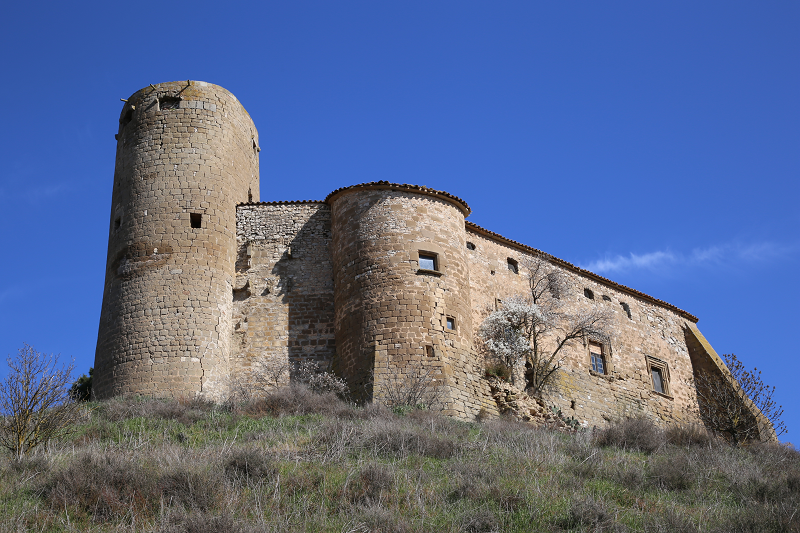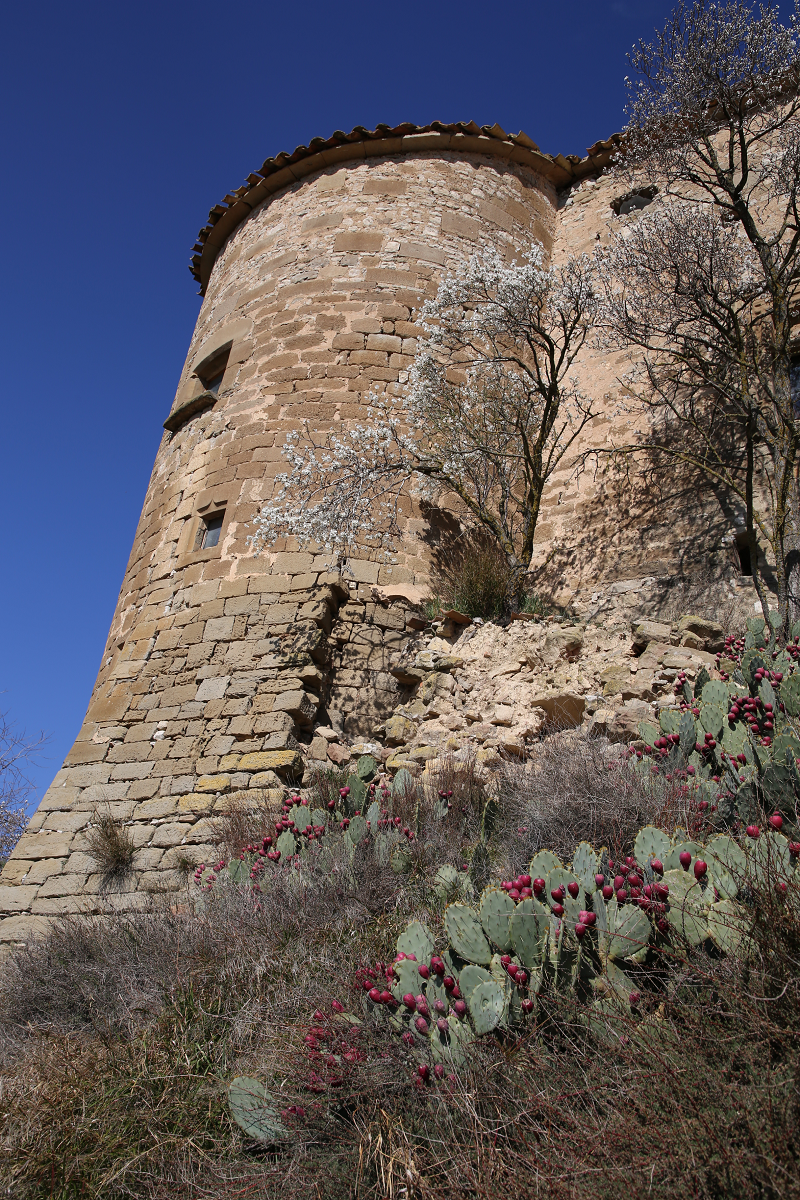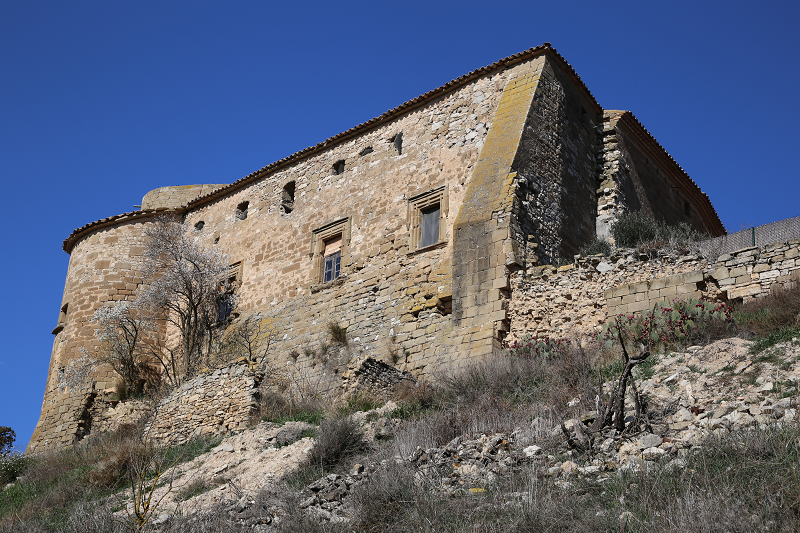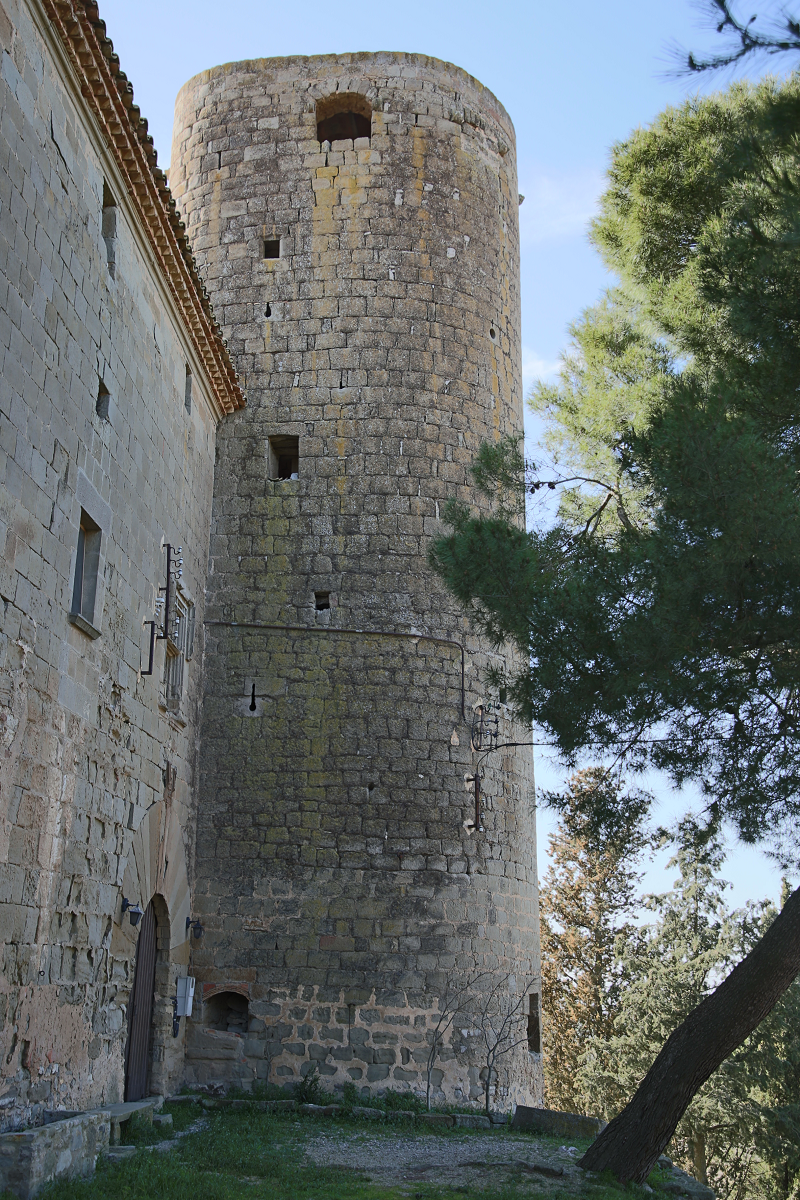The “Gran Enciclopèdia Catalana”, IV (Barcelona, 1973) says (by A. Duran and Sanpere and A. de Fluvià): ‘CASTELLMEIÀ (or Castellmejà; ant Meià). Village and old town of Torrefeta (Segarra), South of Llor.
Castellmeià castle (13th century) was partly reformed at the end of the 16th century and is in a good state of preservation. The Vergós were its lords, also lords of Santa Maria de Meià and of Majanell. At the end of the 17th century, it went to Francesc de Junyent and Marimon, whom the Marquis of Castellmeià was granted in 1716, the only title granted by Felip V to a Catalan after the beginning of the War of Succession. It then passed on to the Amats, the Carcers, and the Vilallongas’.
In fact, the first news directly related to this castle, which, of course, must not be confused with the one of Meià that we have studied in the region of La Noguera, comes from the year 1245, when the provost of Santa Maria de Solsona granted Pere Nolasc (St. Peter) the church of St. Nicolau «que est sita intra terminas Castri de Mediano», located in the parish of Portell. The object of the donation was to build the convent, which would become Sant Ramon Nonat.
We must warn that, according to Piquer, the castle of “Mediano” is the tower of Majanell or Mitjanell, construction of the seventeenth century, which is 0.6 km. of Manresana, in a northeastern direction.
It is clear though that the aforementioned donation refers to the 13th century. Previously, some news allude to Meià or Majanell, although they aren’t very useful. Thus, it appears that in 1080, Mir, husband in second marriage, of Engelsia, owned allods in Meià, which in case she died but he lived, were to be passed to the daughter ‘Chugulada’.
The referred Mir, in the opinion of the historian Serra Vilaró, is Mir Sanç, linked to the Llobera castle. In the testament of Gombau de Ribelles, expressed with the joint will of Marquesa, the wife of the testator, on September 17, 1179 appears the following paragraph: ‘Et ego Marquesa uxor Gumbaldi de Ribeles si meus maritus obierit antequam moriar dimito Raimundo de Ribeles filio meo post meam mortem omnes meos directos… in Balagario et in Castello novo et in Bufagranel et in Medianel prope Deslor et in valle fraosa et in Lobera et in Besora…’ We read that the municipality of Majanell bordered with the one of the Alta-riba castle. Galcerán de Vergós, lord of Meià (Castellmeià), in 1314 married Berenguera, daughter of the lord of La Morana. Of Berenguer de Vergós, who in 1350 requested the vicinity of Cervera, which was canceled in 1372. We know he was the lord of Castellmeià, in 1339. In the Hearth Tax census of 1365-1370 the annotation appears: ‘Bellvehí de Meià, which are of Berenguer de Vergós, twenty hearths’.
Since according to the aforementioned census, there was no other property within the vegueria (cat. feudal administrative territorial jurisdiction) of Cervera belonging to the same owner, it is clear with this reference (Bellveí is a town in the same municipality of Torrefeta) that the castle is implicit. This one also would coincidentally also be subject of work in this century according to Monreal-De Rique, who exposed his opinion as such: “Among latest castle-palaces kind, so abundant in these lands, we must mention the Mejà castle, with an approximately rectangular floor and two thick cylindrical towers in the corners of the smaller sides.
One of them retains the merlons crowning with hooks under the current roof; the other is based on a polygonal slope and is muttered. The original construction of these towers may be from the 14th century, but the facades ornamental windows in the shape of a cross and intersection moldings correspond to the survival of the Gothic style into the sixteenth century. Inside there is a singular polygonal lobby with a thick column, which may correspond to the patio area of an older fortress.The spiral staircase that is housed in the incomplete tower described above is magnificent. Both the outside and the interior of the building have a halved shield, with three on one side and three on the other: the second could belong to the Vilalba family, which, after leaving its original house of Cardedeu, appears in these lands of Cervera and by virtue of matrimonial alliances it happens to be called Vilalba de Meca. One of the shields has the date of March 1569. The fact that the Maià’s castle is older than its current state pretends is something confirmed by the existence of a primitive chapel East of the castle and about one hundred meters away from it, which has a nave with an apse and a pointed barrel vault, which could be from the 13th century.
In the genealogical field, the first Marquis of Castellmeià Francesc de Junyent and Marimon had inheritance and successor in his first-born son, Francesc de Junyent and Vergós, who in 1696 was a military listener of the Generalitat de Catalunya, in 1697 fought against the French invasion of the Duke of Vendôme, in 1700, was one of the founders of the Untrusted Academy, a partisan of the Philips V army besieger of Barcelona in 1713-1714, and in 1718 became a Barcelona city councilor. He was also Baron de Montclar.















